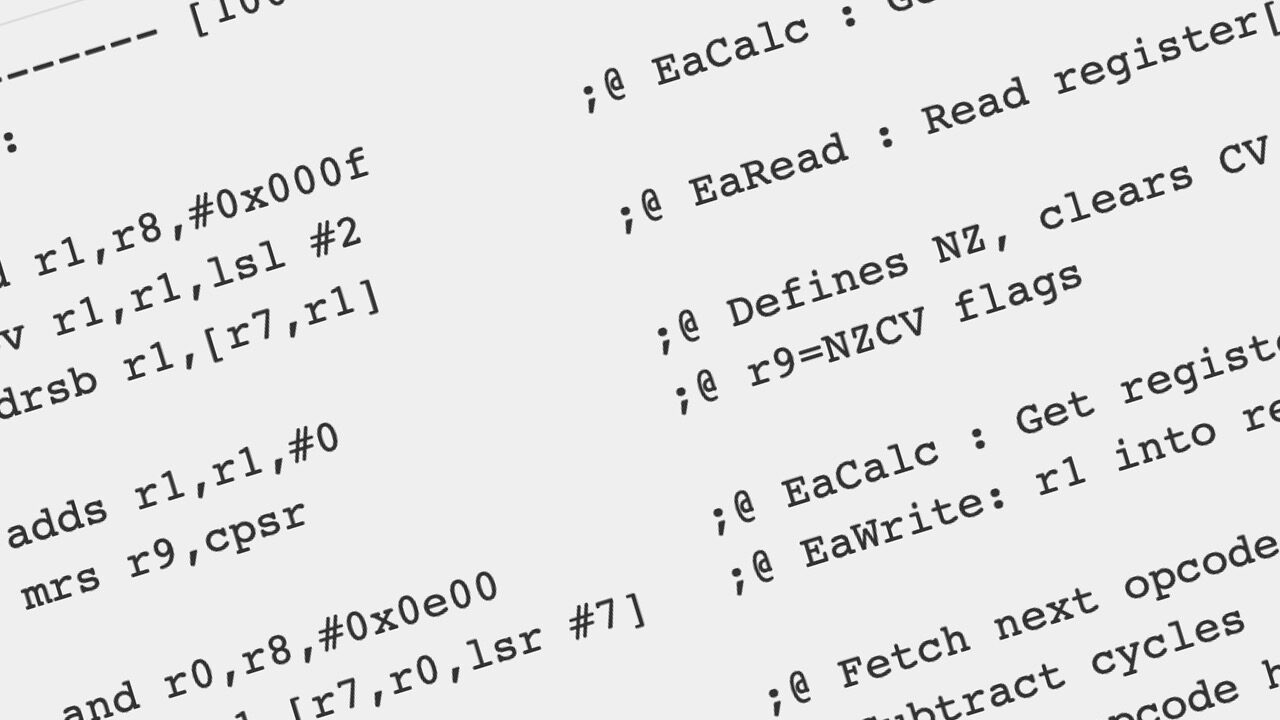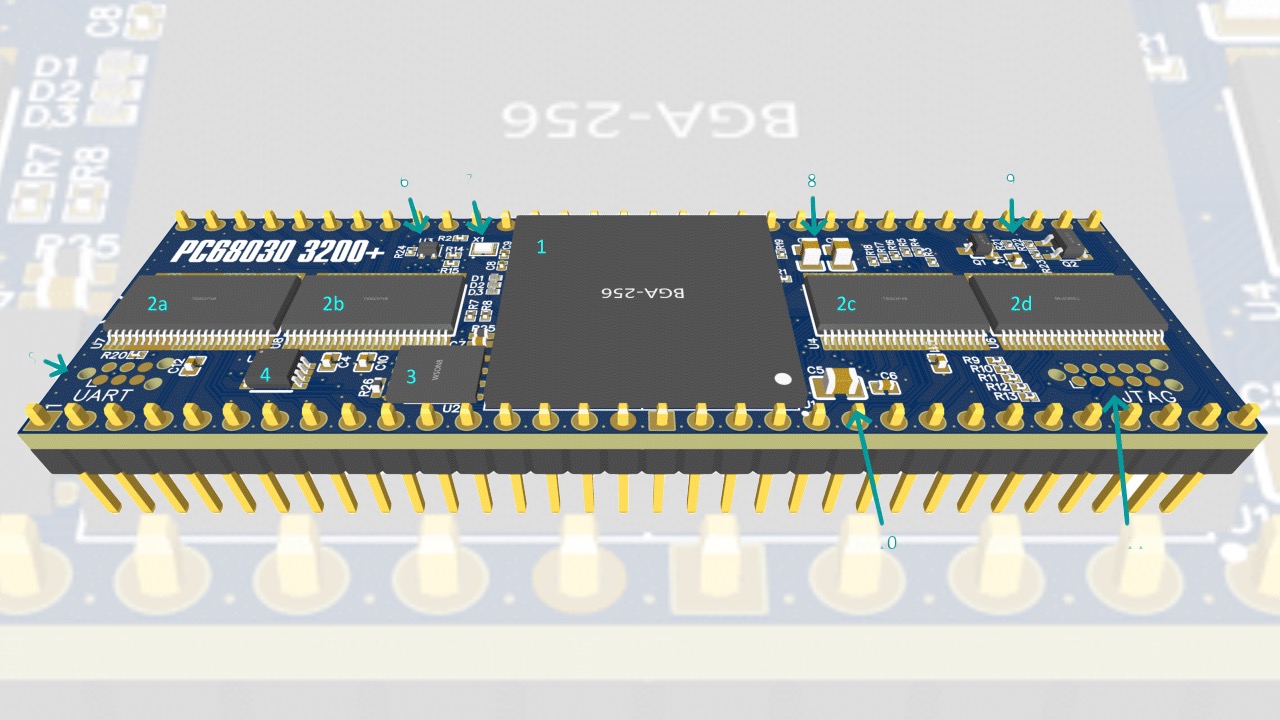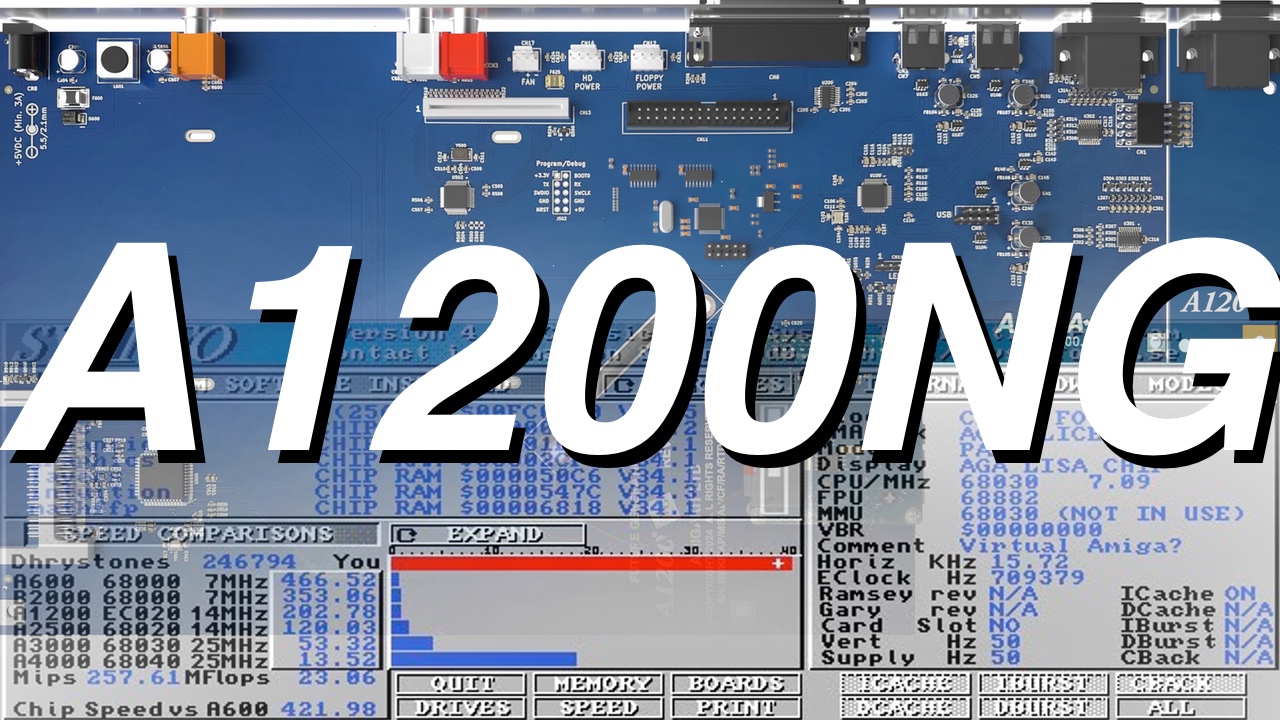The Amiga community has more than just Vampires and Warps. There is also a new ARM on the Amiga project called the Buffee project. This is a new drop-in 68000 replacement with custom hardware and software components based around 68030 CPU that was made by Motorola. The optimistic goal is about a 3.2GHz 68030 which is around 1,000 MIPS for the project which is insane fast for Classic Amiga standard.
Also, the board will come with 512MB or 1GB RAM which will take the AmigaOS usage on Classic Amiga pretty far. With this one out. Vampire and Warp will have a serious competitor.

First, as an accelerator then adding more later
The first board revision of the Buffee board for Amiga is planned to only be a CPU accelerator and nothing more; There will be no HDMI, no USB, no WiFi, or Ethernet added when the first board is out. If this project is successful, then the future boards may certainly have more which is a wise move. Taking steps by steps is important. Amitopia Amiga Magazine goal is to help this project as much as the magazine can.
The ARM-CPU of the Octavo module emulates a 68k processor using a special JIT emulator called Pseudo JIT which supposedly can achieve the speed of a 68030 clocked with 3.2 GHz. Additional to the firmware, the hardware design is freely available. According to the developers in their blog, the production of prototypes gets closer.
Buffee wants to bypass Vampire in speed
The Buffy projects aim at bringing Classic Amiga computers to about a 500MHz PowerPC territory. Vampire 68080FPGA cards reach the speeds of 90MHz PowerPC machines according to the creators of the Buffee board. The aim with the board is to reach 2005 with more than 1,000MIPS in power. It means that gaming and watching MPEG2 movies is something you can be expecting to be doing on your Classic Amiga soon.
YouTube in a browser will be possible in 360p or a bit higher. But then the Classic Amiga computers need to get a good web browser. Don’t expect HD videos yet on Classic Amiga, but each project is doing the impossible possible it seems. So you never know. Playing YouTube’s externaly would be possible in a way.
With goals to reach 1,000 MIPS this new Buffee project is near finishing the first boards. Once they are out, be sure that Amitopia Amiga Magazine will take a look at it way more. The JIT part of this project looks awesome. It’s an ARM 68k JIT emulation. There is much thinking that this is the right way to go and I love that the Classic Amiga platform is loved so much. With faster Classic Amiga, the platform gets better and more modern software too. I love the way the Amiga community is pulling the strings for a better future.
Technical info about The Buffy Project

- The big BGA 256 in the middle is the main CPU, an OSD335x-SM. This comes pre-equipped with either 512MB or 1GB of DDR3L-800 SDRAM as well as all power management and related passive components.
- The four chips surrounding the CPU are our level shifters; four 20-bit SN74CBTD16210 chips. Since these can do 20-bits, it will be possible in a later revision to omit one of the chips, saving some precious board space. There are also some smaller package options to consider as well.
- The first small chip on the bottom is the SPI Flash; 16MB of it, specifically. This may shrink before mass production, but right now it’s a very generous size just in case.
- This is new; it’s to isolate the UART from the CPU incase you power-off one unit without powering off the other.
- Also new is the TC2030 (Tag-Connect) form-factor UART connection. TX is on pin 2 and RX is on pin 4; the other pads are all ground. This saves a lot of room over the older 0.1” header and with a ground, should be more robust. The UART also serves as a back-up programming port as the Flash can be programmed using XMODEM.
- A small addition to performing the warm-reset. Crazy as it sounds, the OSD335x has a 1.8V power good OUTPUT and a 3.3V warm reset INPUT.
- This is the 24MHz crystal. I seriously contemplated the idea of making this a programmable oscillator but between running out of room and the complications with the internal clock circuitry this would create, I vetoed myself.
- This is 55uF of bulk capacitance on the 3.3V line as specified in the checklist
- This is the clamp circuit required to avoid destroying the chip during power-down. It may not be required since we’re not heavily using either the 1.8V or 3.3V power rails. Most of our logic runs at 5V. Anyway, this stops the difference from the 1.8V rail and 3.3V rail from exceeding 2.0V which apparently is “bad”.
- This is a high and low-frequency capacitor on the 5V line to help filter out the (possibly) noisy power from the Amiga. The bulk capacitance also helps a little on power dips.
- Finally, the JTAG is implemented as a TC2050 connector to the core. JTAG or UART may be used for programming, but JTAG is the only way to debug code efficiently, especially during the initial firmware development phase.
The fact that you have 512MB or 1GB of RAM helps a lot. Not for just games, but also for serious work. Amiga computers only needs a push. AmigaOS is perfect for being used daily even today.
About the Buffy project
The Buffee Accelerator Project is the brainchild of Renee Cousins and Tim Wacker; started in the fall of 2019, it was originally conceived as the ultimate 68000 accelerators to actually deliver on the promises made by the Vampire accelerator released a few years ago. Disappointed by its direction and lack of any performance improvements, we named the project “Buffy” for obvious reasons. This was recently renamed to Buffee to avoid any intellectual property disputes, but we’ll do our best to keep our tongues firmly in-cheek.
It will be interesting to see this board in action. I am waiting for it to come and I am ready to support it. All info about availability and pricing will come soon.
Source: www.buffee.ca





